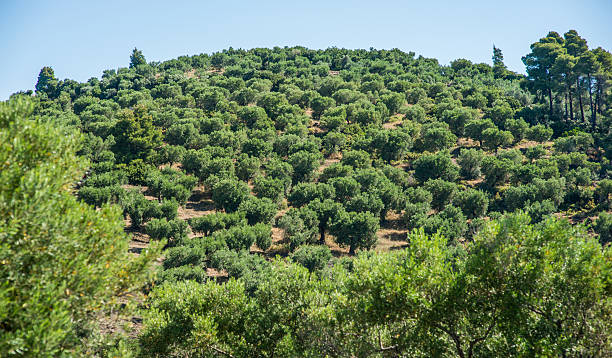7 – Environment and Agroecosystems
Two weeks ago I already covered environment and agroecosystems, but because I two other relevant topic that I could cover within this area (but also because there are currently no other topics). Therefore, I decided to research the two other subject within this topic: environmental conditions that affect the crop’s yield and whether the current olive tree cultivation sustainable or not.
Yield’s
environmental condition
One of the most important environmental condition that
affect the yields of the olive tree is temperature. This is because the crop is
not able to survive with temperatures below the -12°C, but require a period of
low temperatures (0-7°C) for flowering bud (Ioannis Therios, 2009) . Besides, poor
weather conditions during the tree’s bloom, flower pollination can result in
low yields (UCCE Sonoma County,
2006) .
Moreover, the soil’s characteristics are also said to be important in term of
vulnerability to erosion and leaching of contaminated elements in fertilizers
and pesticides (Beaufoy, N.D.) .
Sustainable
olive production
The current manner in which olive trees is been grown can
not be labeled as sustainable. Since as we have already found out in 5 – Environment and Agroecosystems, is
that one cultivates the trees in a monocultural manner, which I think has got a
disatrous for communities, where one does grow local food while using
sustainable practices (Carbon Trade Watch,
N.D.) .
Furthermore, it has been said that large-scale monocultures take a toll on the
earth, and locally and naturally occuring plants are often seen as pests with
the result in them being destroyed, in which is said to upset the local
ecological balance. Moreover, because one grows so many homogeneous plants in
one area, one also requires to use a lot of artificial chemical and mineral
input. Apart from this, monocultures are more prone to disease, which makes the
spread of outbreaks more quickly and easier over a large area covered with the
same crop. Therefore, in order to fight a diseas outbreak, pests or weeds,
farmers will have to apply even more herbicides and pesticides to keep the
plants growing.
My suggestion on making the production more
sustainable is by growing the olive trees with the agroforestry approach,
whereby one grows crop, trees and animal together (Association for
Temperate Agroforestry, N.D.) . Additionally, this management system
is said to optimize the biological interaction between different plant species,
can result in higher yields and reduce operational costs (RESET, N.D.) .
References
Association
for Temperate Agroforestry. (N.D.). What is Agroforestry? Retrieved November
16, 2017, from Association for Temperate Agroforestry:
http://www.aftaweb.org/about/what-is-agroforestry.html
Beaufoy, M. P. (N.D.). The environmental impact of
olive production in the European Union. Retrieved November 16, 2017, from
Europa: http://ec.europa.eu/environment/agriculture/pdf/oliveoil.pdf
Carbon Trade Watch. (N.D.). Monocultures. Retrieved
November 16, 2017, from Carbon Trade Watch:
http://www.carbontradewatch.org/issues/monoculture.html
Ioannis Therios. (2009). Thermal requirements of the
olive. In I. Therios, Olives (p. 53). Retrieved November 16, 2017
RESET. (N.D.). Agroforestry and Its Benefits.
Retrieved November 16, 2017, from RESET:
https://en.reset.org/knowledge/agroforestry-and-its-benefits
UCCE Sonoma County. (2006). Olive Oil Yield Factors
Affecting production. Retrieved November 16, 2017, from UCCE Sonoma County:
http://cesonoma.ucanr.edu/files/27239.pdf



Reacties
Een reactie posten